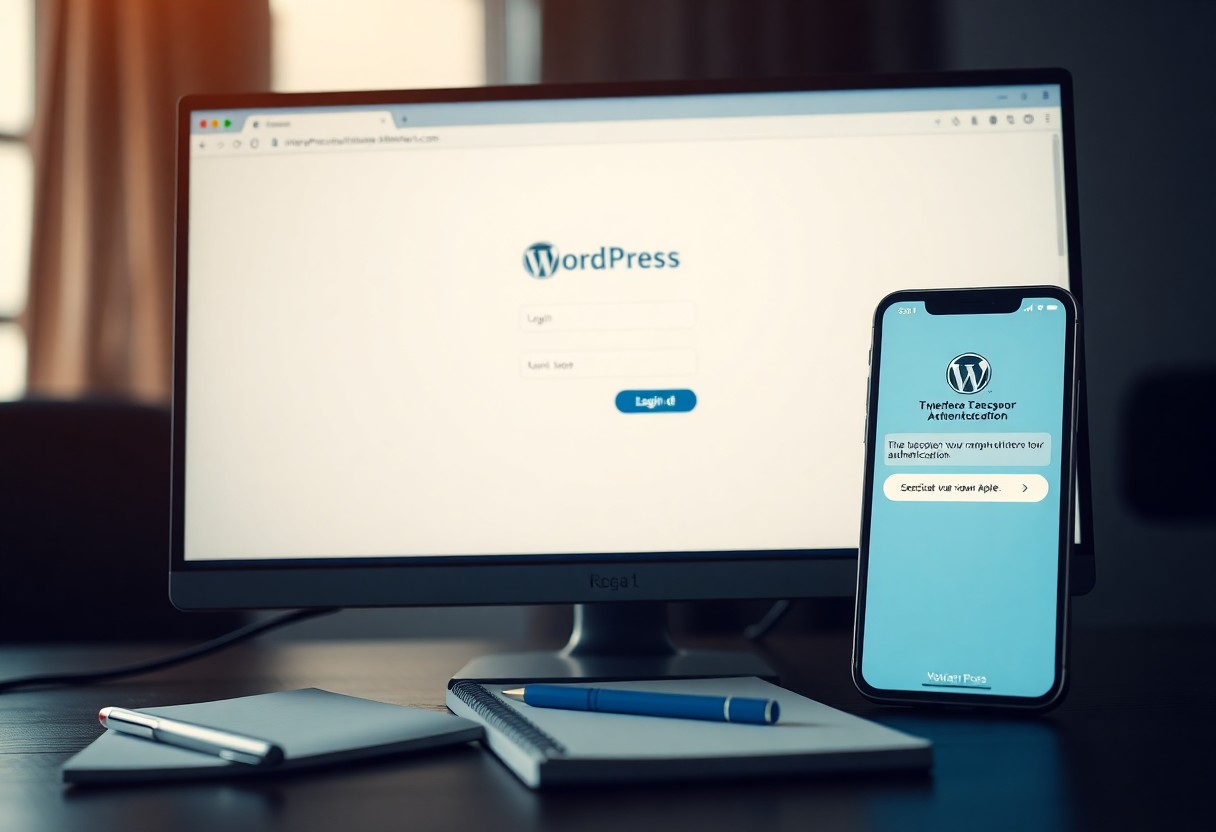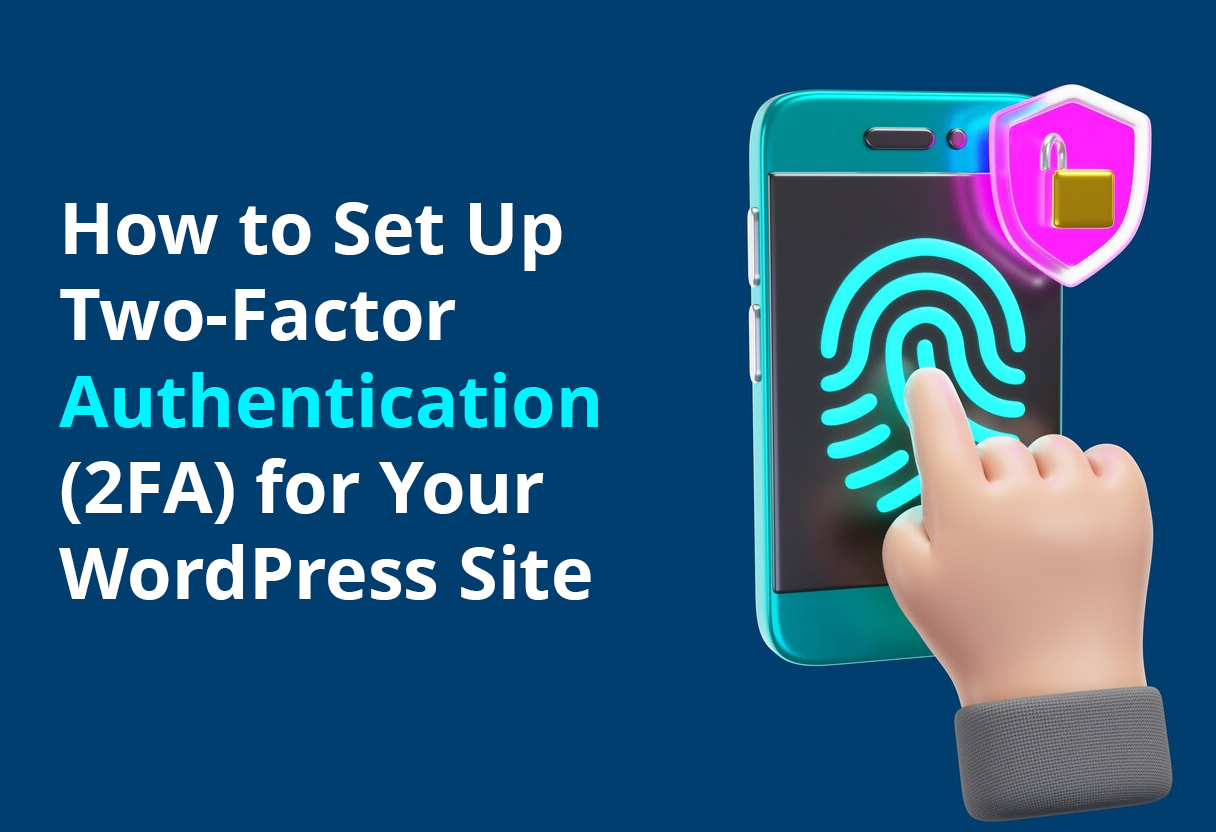You can significantly enhance the security of your WordPress site by setting up Two-Factor Authentication (2FA). This extra layer of protection ensures that even if someone manages to obtain your password, they won’t be able to access your account without a second form of identification.
In this guide, you will learn how to easily implement 2FA using popular plugins, helping to safeguard your valuable content and maintain your site’s integrity. Following these steps will empower you to take control of your online security effectively.

Key Takeaways:
- Enable 2FA by using a trusted plugin such as Google Authenticator or Authy to enhance your WordPress security.
- Choose a secondary authentication method like SMS, email, or an authenticator app based on your preference for convenience and security.
- Regularly review and update your 2FA settings to ensure they align with your evolving security needs.
Understanding Two-Factor Authentication
For anyone managing a WordPress site, security is of utmost importance, and Two-Factor Authentication (2FA) provides an important layer of protection. By requiring a second method of verification, 2FA helps to ensure that only you can access your account, significantly reducing the risk of unauthorized access.
What is Two-Factor Authentication (2FA)?
Clearly, Two-Factor Authentication (2FA) adds an extra step during the login process, typically requiring you to input not only your password but also a unique code sent to your mobile device or email. This way, even if someone gets hold of your password, they would still be unable to access your account without this second factor.
Importance of 2FA for WordPress Security
Little do many website owners realize that implementing 2FA can significantly fortify their WordPress site’s security. It acts as a powerful deterrent against hackers, making it more challenging for them to breach your site.
To safeguard your site effectively, adopting Two-Factor Authentication is important. It not only fortifies your login process but also diminishes the likelihood of successful brute force attacks.
Should your login credentials become compromised, 2FA ensures that any unauthorized user cannot access your site without the second form of verification, thereby protecting sensitive information and preserving your site’s integrity. As cyber threats continue to evolve, utilizing 2FA is an effective strategy to enhance your overall security posture.
Choosing the Right 2FA Method
Assuming you’ve decided to implement two-factor authentication, the next step is to choose a method that suits your needs. Factors like convenience, security, and your typical online behavior can influence your decision.
Whether you prioritize accessibility or heightened security will guide your choice among various options available for securing your WordPress site. If accessibility is your main concern, you might gravitate towards user-friendly plugins that simplify the management of your site’s security without overwhelming your visitors. However, if you’re more focused on protection against potential threats, you would benefit from implementing robust measures such as strong password policies and regular software updates. To help you navigate this landscape, here are some top security tips for WordPress that can enhance your site’s defenses while maintaining its usability.
SMS vs. Authentication Apps
An authentication app, such as Google Authenticator or Authy, is generally more secure than SMS for two-factor verification. While SMS messages can be intercepted, authentication apps generate unique codes on your device that are not transmitted over the network, making them less vulnerable to attacks.
Hardware Tokens and Other Options
Assuming you want to explore additional security layers, hardware tokens provide a highly secure option. These are small devices that generate authentication codes or plug into your computer, ensuring only you have access to your 2FA code.
Hardware tokens, like YubiKey or RSA SecurID, offer superior security by keeping your authentication method in a physical device that you own. Unlike SMS or authentication apps that can be affected by malware, hardware tokens are less susceptible to hacking as they don’t connect to the internet.
However, you should keep in mind that losing your token can mean being locked out of your accounts, so always have a backup method available. This is a higher investment but pays off in greater security for your WordPress site.
Enabling Two-Factor Authentication on Your WordPress Site
All WordPress site owners should prioritize security, and enabling Two-Factor Authentication (2FA) is a key step in protecting your online presence. By adding an extra layer of security to your login process, you can significantly reduce the risk of unauthorized access to your website.
In just a few simple steps, you can enhance the safety of your site and safeguard your content, customer data, and personal information.
Selecting a 2FA Plugin
If you’re looking to add Two-Factor Authentication to your WordPress site, the first step is selecting a reputable 2FA plugin. There are various plugins available in the WordPress plugin repository, so take your time to research options that are well-rated and fit your specific needs. Some popular choices include Google Authenticator, Authy, and Two Factor Authentication.
Step-by-Step Setup Process
Site Setup for Two-Factor Authentication can be straightforward when you follow these steps:
Step Description
| 1 | Install and activate your chosen 2FA plugin from the WordPress Admin dashboard. |
| 2 | Navigate to the plugin settings to configure your 2FA options. |
| 3 | Choose your preferred method of 2FA, such as an app or SMS verification. |
| 4 | Set up backup codes in case you lose access to your primary 2FA method. |
| 5 | Test the setup to ensure everything is working correctly before you log out. |
It’s important to follow the steps carefully to ensure you properly implement Two-Factor Authentication. By installing and configuring your chosen plugin, you will add an incredibly important layer of security to your WordPress account.
Testing your login process after completing the setup ensures that you won’t encounter unexpected issues when accessing your site. Should you lose access to your 2FA method, having backup codes stored in a safe place allows you to regain access quickly.
Tips for Effective Two-Factor Authentication
Despite the added layer of security that Two-Factor Authentication (2FA) provides, there are several tips to ensure its effectiveness. Follow these practices:
- Utilize an authenticator app for generating codes.
- Backup your recovery codes in a secure location.
- Regularly update your passwords.
- Enable notifications for suspicious login attempts.
Knowing these tips will help you enhance the security of your WordPress site.
Best Practices for 2FA Security
Any effective Two-Factor Authentication strategy should prioritize user convenience without compromising security. Utilize methods like SMS, authenticator apps, or hardware tokens, ensuring they align with your security needs. Regularly reassess your 2FA method to stay informed about the latest advancements in security technology.
Common Pitfalls to Avoid
One of the main pitfalls to avoid when implementing Two-Factor Authentication is using easily accessible recovery options. Security should never be taken lightly, and using readily available methods, like email verification, can expose you to phishing attacks.
Always opt for more secure recovery options, such as hardware tokens or securely generated recovery codes. Additionally, avoid sharing your 2FA codes with anyone, as this can lead to unauthorized access. By understanding the dangers of weak security practices, you will be better equipped to protect your site effectively.
Testing Your 2FA Setup
Once again, testing your two-factor authentication setup is crucial to ensure it functions as intended. Attempt to log in to your WordPress site using your username and password, and then enter the code generated by your 2FA app or sent to you via SMS or email. If you successfully gain access, congratulations! Your 2FA setup is working correctly.
Ensuring Functionality
Any problems during login should be addressed promptly. Verify that your 2FA method is properly synced or configured. Check for the correct time settings on your device, especially if you’re using an authenticator app, as this can affect the code generated. Make adjustments as needed.
Troubleshooting Common Issues
With two-factor authentication, you may encounter some issues during setup or login. Check for incorrect codes, ensure your device has the necessary software updates, and confirm your user settings.
If issues persist, it’s advisable to temporarily disable 2FA through your admin panel until resolved, but be cautious with this option. Always keep your backup codes secure for emergencies and consider consulting your 2FA provider’s support if you continue to face difficulties.
It is important to carefully follow instructions to enhance your site’s security. If you overlook any steps during the 2FA setup, you may inadvertently lock yourself out of your own site.
Always have backup methods in place for account recovery and to avoid potential downtime. Be proactive in keeping your credentials safe and current. Utilizing a trusted method for 2FA can significantly improve your site’s security posture.
Educating Your Users on 2FA
Not only does two-factor authentication (2FA) enhance your WordPress site’s security, but educating your users about it is equally important.
Make sure they understand how 2FA works, its significance in protecting their accounts, and the steps they need to follow to set it up. This promotes better compliance and can significantly reduce security risks for everyone involved.
Informing Users About Changes
The introduction of 2FA on your WordPress site is a change that requires clear communication. Inform your users ahead of time about the implementation, explaining how this added layer of protection works and how it will benefit their security. Ensure they know the timeline for when they will be required to use 2FA, so they can prepare accordingly.
Providing Support and Resources
Any transition to 2FA can lead to questions and concerns from users, making it important to offer comprehensive support. Provide clear, user-friendly documentation, FAQs, and video tutorials that guide them through the setup process. This way, you reassure them that assistance is readily available and encourage a smoother adoption of the new security measure.
Another effective strategy is to ensure you have a well-staffed support system in place, ready to handle inquiries or issues related to 2FA. This could include live chat support or an email support ticket system specifically for authentication-related concerns.
Make sure your resources are easily accessible, and promote them through newsletters or direct emails, highlighting the importance of user security. By providing organized and timely support, you foster a sense of trust and empowerment in your users, encouraging them to embrace 2FA willingly.
Summing up
To wrap up, setting up two-factor authentication (2FA) for your WordPress site enhances your security significantly. By following the step-by-step process, which includes choosing a reliable plugin, configuring settings, and linking your authentication method, you actively protect your site from unauthorized access.
Implementing 2FA provides an extra layer of defense and helps safeguard your sensitive information. With these measures in place, you can focus on managing your content and engaging with your audience, knowing that your site is more secure.





